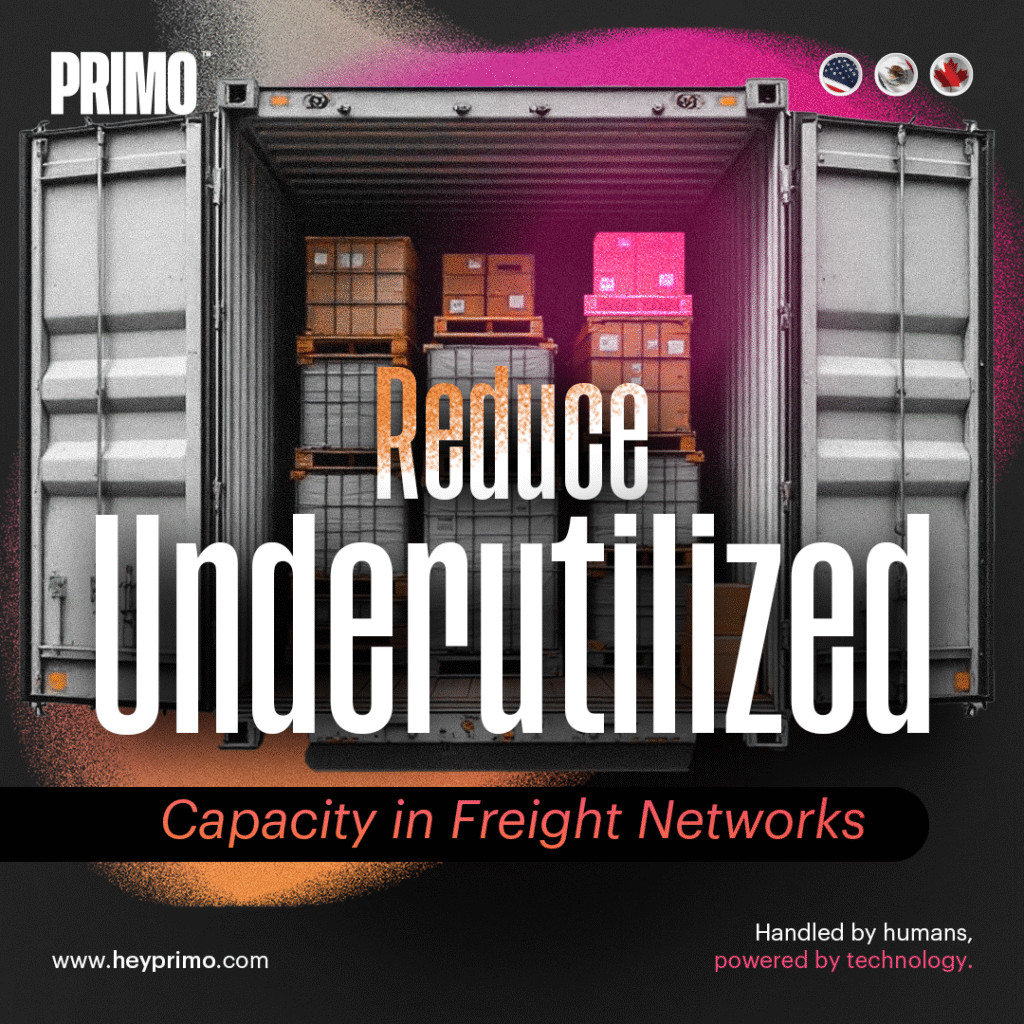
A large percentage of today’s freight network operates below its true potential. Industry data shows that nearly 43% of truckload shipments are only partially full. According to FreightWaves, poor trailer space utilization is a major issue in 2023, driving up costs and reducing efficiency, and the trend appears to be repeating. This is especially problematic for industries focused on sustainable farming, where every mile and load directly impacts environmental goals.
Underutilization increases the cost per mile and inflates transportation budgets. It also strains carrier relationships. Carriers must make up for wasted miles and idle time, often by raising rates or deprioritizing shippers with inconsistent volume.
Empty return trips, or deadhead miles, contribute to driver dissatisfaction and regulatory exposure. When freight is not aligned with available capacity, companies lose opportunities to reduce waste and improve delivery performance.
Prioritize Route Optimization and Load Consolidation
Inefficient routing leads to wasted miles and underused equipment. Identifying recurring empty lanes is the first step toward improving utilization. Shippers can reduce waste by consolidating loads and planning routes that minimize empty space.
One effective method is using ltl shipping to combine smaller shipments into a single truckload. This approach helps fill trailers more consistently and reduces the number of trips required.
Consolidation also supports better resource allocation. When trucks are fully loaded and scheduled with precision, carriers benefit from reduced downtime and shippers gain more consistent service.
Leverage Forecasting and Demand Planning
Forecasting freight demand allows logistics teams to plan routes and schedules with greater accuracy. Using historical data, seasonal trends and order cycles, shippers can anticipate volume changes and adjust accordingly.
This planning helps align freight with available capacity. When carriers receive steady, predictable volumes, they can allocate equipment and drivers more effectively. Shippers looking to improve this process should contact us to explore tools that support better planning and execution.
Dynamic routing tools can further enhance this process. When integrated with a transportation management system, these tools allow for real-time adjustments based on weather, volume shifts or delays. This ensures that trucks are used efficiently and routes remain effective.
Use Real-Time Technology and Load Matching
Real-time visibility has changed how freight is matched to available capacity. Shippers using digital tools can track truck locations, monitor freight status and identify open capacity instantly.
Live load boards reduce idle time by matching trucks to loads along their route. This minimizes empty miles and keeps equipment moving. It also improves service reliability by reducing delays caused by poor coordination.
With full network visibility, shippers can make informed decisions between truckload, LTL, intermodal or regional carriers. This flexibility helps ensure that each shipment is handled in the most efficient way possible.
Manage Carrier Relationships and Track Performance
Carrier partnerships are essential to maintaining consistent operations. Shippers who treat carriers as long-term partners see better service and more reliable access to capacity. Joint planning allows both sides to share forecasts and adjust schedules in advance.
Shippers interested in building stronger partnerships should have a clear brokerage partnership that enables collaborative planning can improve performance and reduces risk. Carriers are more likely to prioritize loads from shippers who provide consistent volume and communicate clearly.
These relationships lead to preferred pricing, better scheduling and improved service during high-demand periods. They also create accountability, with both sides working toward shared goals.
Final Actions to Improve Freight Utilization
To reduce underutilized capacity and improve freight performance, shippers should take the following steps:
These actions support more efficient freight operations and align with sustainable farming goals by reducing emissions and waste.
Build a More Efficient Freight Network With PRIMO
Improving freight utilization is not about overloading trailers. It requires coordinated planning, real-time visibility and strong carrier relationships. Aligning demand with capacity reduces waste and improves delivery performance. Using digital tools and tracking key metrics ensures that freight strategies remain effective as conditions change. These efforts also support environmental goals by reducing emissions per shipment. Connect with a PRIMO team member to begin building a freight network that delivers consistent results.